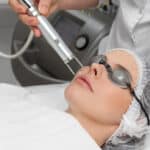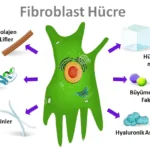 Skin spots occur as a result of the increase in pigment cells that give the skin its color. There are many reasons for skin spots such as freckles, sun spots, age spots, melasma. In addition to these, hormonal factors such as hereditary features, use of irritating cosmetic products, use of certain drugs and pregnancy also support the formation of skin spots. Skin spots, which cause a very bad appearance in terms of aesthetics, can also be a harbinger of some health problems. Treatment of skin blemishes should definitely be applied by a specialist dermatologist. Otherwise, treatments applied by non-professionals may cause more staining on the skin.
Skin spots occur as a result of the increase in pigment cells that give the skin its color. There are many reasons for skin spots such as freckles, sun spots, age spots, melasma. In addition to these, hormonal factors such as hereditary features, use of irritating cosmetic products, use of certain drugs and pregnancy also support the formation of skin spots. Skin spots, which cause a very bad appearance in terms of aesthetics, can also be a harbinger of some health problems. Treatment of skin blemishes should definitely be applied by a specialist dermatologist. Otherwise, treatments applied by non-professionals may cause more staining on the skin.
BEFORE & AFTER

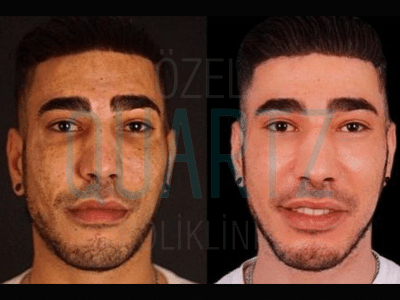

What are the types of skin spots?
There are many types of skin blemishes. Some of the more common types include:
- PIH and PIE (Postinflammatory hyperpigmentation and postinflammatory erythema)
Post-inflammatory hyperpigmentation and erythema are brown and red marks that remain after acne and similar skin lesions have healed.
- Freckles
Freckles are small, flat spots that are brown, red, tan, or black in color. They can occur anywhere on the body. It usually starts in childhood. Under the influence of the sun’s rays, the summer months become darker.
 Sunspots
Sunspots
Another type of hyperpigmentation is sunspots and age spots. These spots are light brown spots that appear in patches on areas exposed to a lot of sun and usually after the age of 35.
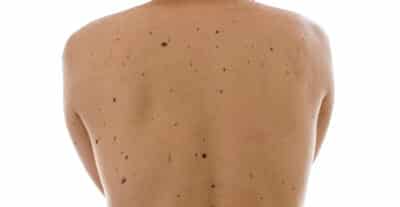 Melasma
Melasma
Melasma is a type of hyperpigmentation that appears in the form of a mask. It increases as a result of hormonal changes. It increases in situations where estrogen levels increase, such as during pregnancy and the use of birth control pills.
- Age spots
They are diffusely located brown spots on the back of the hands, arms, legs and face that usually appear after the age of 50.
 Birthmarks
Birthmarks
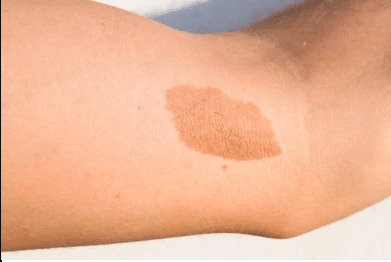 The spots that occur on the skin of a newborn baby are called birthmarks. They can occur during or shortly after birth. Some birthmarks are temporary and some are permanent. U In addition, these skin spots may sometimes develop due to the following reasons:
The spots that occur on the skin of a newborn baby are called birthmarks. They can occur during or shortly after birth. Some birthmarks are temporary and some are permanent. U In addition, these skin spots may sometimes develop due to the following reasons:
Improperly formed blood vessels
Darker patches of skin that are stuck together or the skin pigment cells that form these spots
A condition of overgrowth of the skin that causes high spots on thickened skin
Birthmarks look different from the skin that surrounds them. The size and images of this type of stain vary. These spots may be flat or raised, bruised or blot-like, pink-red or flesh-colored. Birthmarks are a type that are mostly harmless. However, these spots on the baby’s skin can also be a sign of another underlying condition. In this case, you should definitely go to a dermatologist. Harmless birthmarks can grow rapidly at times. This can be serious. In this case, it would be useful to seek the help of a dermatologist.
7.Other spots
Sometimes, a newly developing skin lesion may look like a spot, if it is progressive, growing, contains light and dark colors, if it is a different spot from the others, it should be examined by a dermatologist as soon as possible and diagnosed.
What are the symptoms of skin spots?
Skin spots can range from light to dark brown. The color of dark spots varies depending on the skin tone of the person. However, these points, which have the same texture as the skin, do not cause any health problems. Only the melanin pigment can behave differently than other parts of the skin.
Skin spots vary in size and can occur in any part of the body. However, they are more common in areas exposed to sunlight than in other areas.
Skin spots are quite common in the following areas:
- Facial area
- Back area
- Shoulders
- Back of hands
In people with dark skin color, spot-shaped spots that are a few shades darker than their skin usually disappear on their own within 6-12 months. Deeper stains may take many years to fade. Deep color changes often appear as blue or gray. However, a spot may appear darker than the individual’s natural color.
Why do skin spots occur?
There are multiple reasons for the formation of skin blemishes. These are listed below:
- Sun Damage
People who are exposed to too much sun develop quite a lot of skin spots. The resulting skin spots are also known as sun lentils or liver spots. But it has nothing to do with the liver.
Skin spots appear on the most exposed areas of the body, such as the face, hands and arms.
- Hormonal changes
Melasma is a skin problem that causes small patches of color on the skin. Melasma is generally more common in women during pregnancy due to the intense effect of hormones.
- Side effects of drugs
The use of certain drugs can increase skin pigmentation and cause dark spots on the skin. The most common of these drugs are non-steroidal anti-inflammatory drugs, tetracyclines and psychotropic drugs.
- Wound healing
Insect bites, burns, or damage to the skin for any other reason may leave a dark color on the skin later in the healing process. Such stains can sometimes be temporary and sometimes permanent.
- Irritation
Some cosmetic products invite skin irritation, which can cause dark spots on the skin.
- Diabetes
Diabetes can cause some areas of the skin to darken.
How do skin spots go away?
 Skin spots are treated according to the cause. For example, while cream treatments are applied in the foreground for melasma, laser treatment may be preferred more for other spots. Although most of the spots do not cause health problems, many patients want to be treated because of their appearance.
Skin spots are treated according to the cause. For example, while cream treatments are applied in the foreground for melasma, laser treatment may be preferred more for other spots. Although most of the spots do not cause health problems, many patients want to be treated because of their appearance.
A dermatologist may apply creams or procedures to lighten or, in some cases, remove dark spots on the skin.
In order to determine the best treatment method for the person, it is necessary to correctly determine the causes of the appearance of skin spots, to make a correct diagnosis, wrong treatments applied by people who are not specialists can increase the spots. Treatment options for skin spots will differ according to the size of the spots and the structure of the skin.
How is skin blemishes treated? What are the treatment methods?
The method to be used in the treatment of skin spots varies according to the cause of the formation of the spots. In addition, the depth and size of the stain may vary during the treatment process. Most of the stain treatments are recommended to be done in the winter months when there is not much exposure to the sun’s rays.
Types of skin spots treatments include:
Laser treatments
According to the type of stain, fractional and non-fractional (Q switch nd YAG etc.) laser is selected in cooperation with the specialist physician and the patient, and the sessions are planned. The laser beam targets the pigment cell and smashes it. It may not be suitable for all skin types and all types of blemishes. More than one session may be required for the stain to heal completely.
Mesotherapy
In this method, stain-opening agents are injected under the skin with the help of a thin needle, resulting in cell regeneration in the stained area. Depending on the regeneration and dispersion of melanocyte cells, both skin blemishes are treated and as a result of the procedure, it is aimed to achieve a healthier and more vibrant skin appearance. The active ingredients, doses and number to be given are determined by the specialist physician according to the type of stain.
Chemical peeling
Chemical peeling provides an effective result on mostly superficial stains. With this method, it is aimed to form new skin cells in the area where the application is made by peeling the upper layer of the skin. With this process, cells are renewed. Afterwards, it is very important to protect the skin from the sun.
Cryotherapy
Cryotherapy is the process of freezing with cold, the stained cells are frozen and damaged, and the formation of new cells is triggered.
PRP
In this method, the platelet-rich plasma part of the blood taken from the person is separated and injected into the skin. With the help of the clot cells used in the PRP process, the spots heal and the skin is renewed and gains a brighter and more vibrant appearance.
Cream treatments
In some types of stains, effective and adequate treatment can be provided with the creams prescribed by the specialist physician. In order for the cream treatment to give results, the treatment must be used for at least 12 weeks and it must be protected from the sun very well.
What are the precautions to be taken regarding the formation of skin spots?
There are some recommendations regarding the formation of skin spots that should be followed by everyone, regardless of age and gender. These recommendations are listed below:
Prolonged exposure to the sun is dangerous. It is helpful to avoid the sun as much as possible.
Solarium should be avoided.
It is important to pay attention to use sunscreen lotions and creams with at least 30 factor not only in summer but also in other seasons. Sunscreen cream should be renewed every 2 hours.
Attention should be paid to burns on the skin caused by the sun. Perfumes, colognes and alcoholic tonics areas should not be driven.
Skin after treatments such as laser hair removal, waxing or skin care must be protected from the sun.
Pimples, acne and black and white dots should not be squeezed.
Prolonged exposure to sunlight during pregnancy is dangerous. Avoid.
The use of UV-protective sunglasses should be preferred for unreliable and non-doctor-recommended cosmetic products.
Care should be taken to use a brimmed hat.
Protective clothing should be worn to minimize the harmful effects of sun rays on the skin.
How much is skin spots treatment? What are the prices of skin spots treatment?
The prices of skin spots vary according to the skin problem of the person, the degree of damage and skin structure. It is not legal for centers approved by the Ministry of Health to indicate prices on their websites. You can reach our clinic by calling +90212 241 46 24 to find out the most suitable price information for you and for all your other questions, and learn the prices of skin spots treatment.




